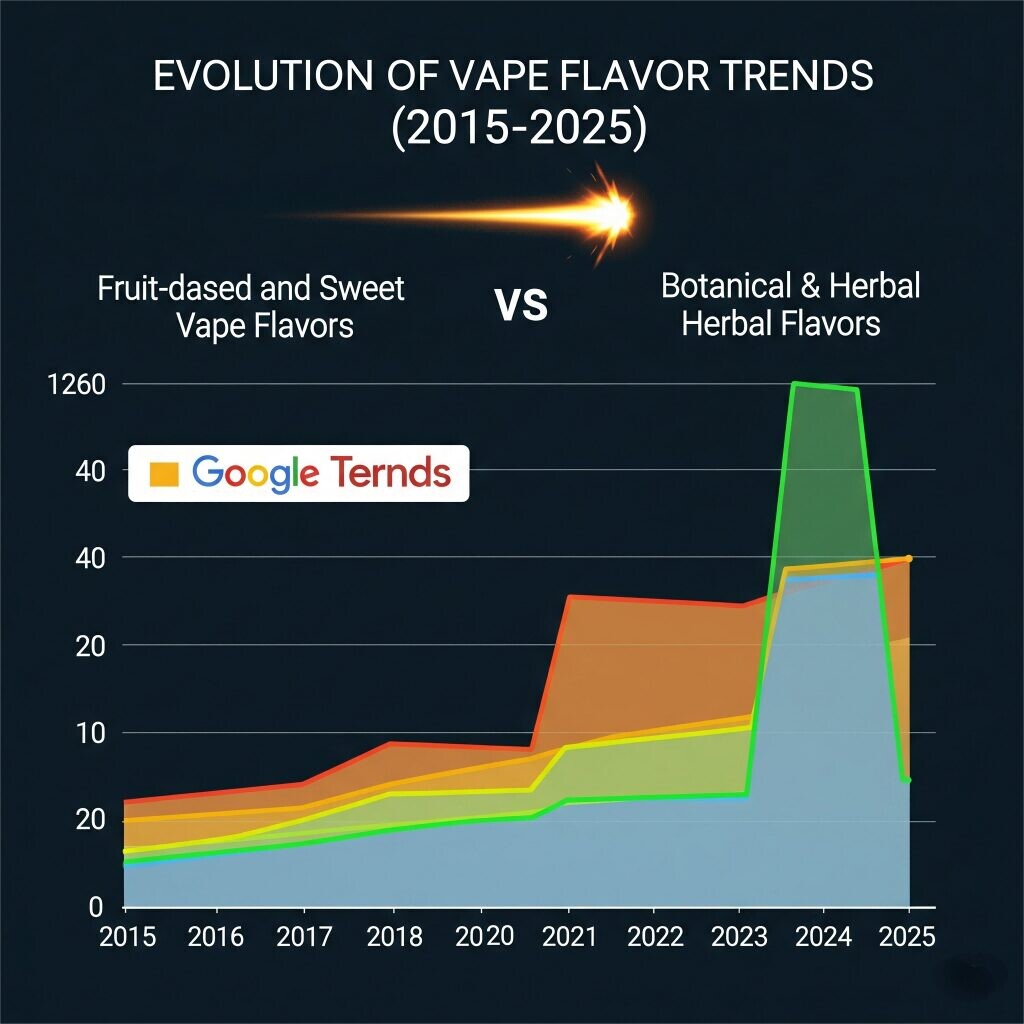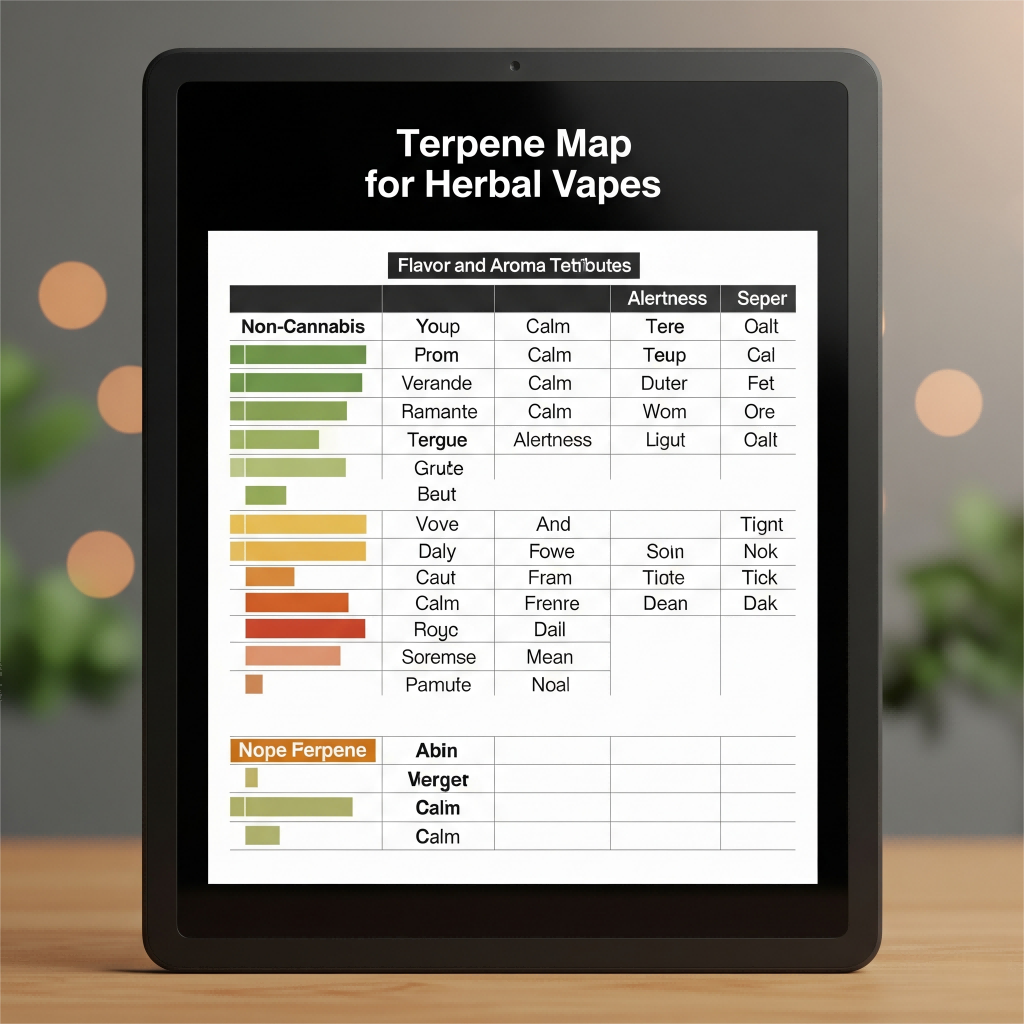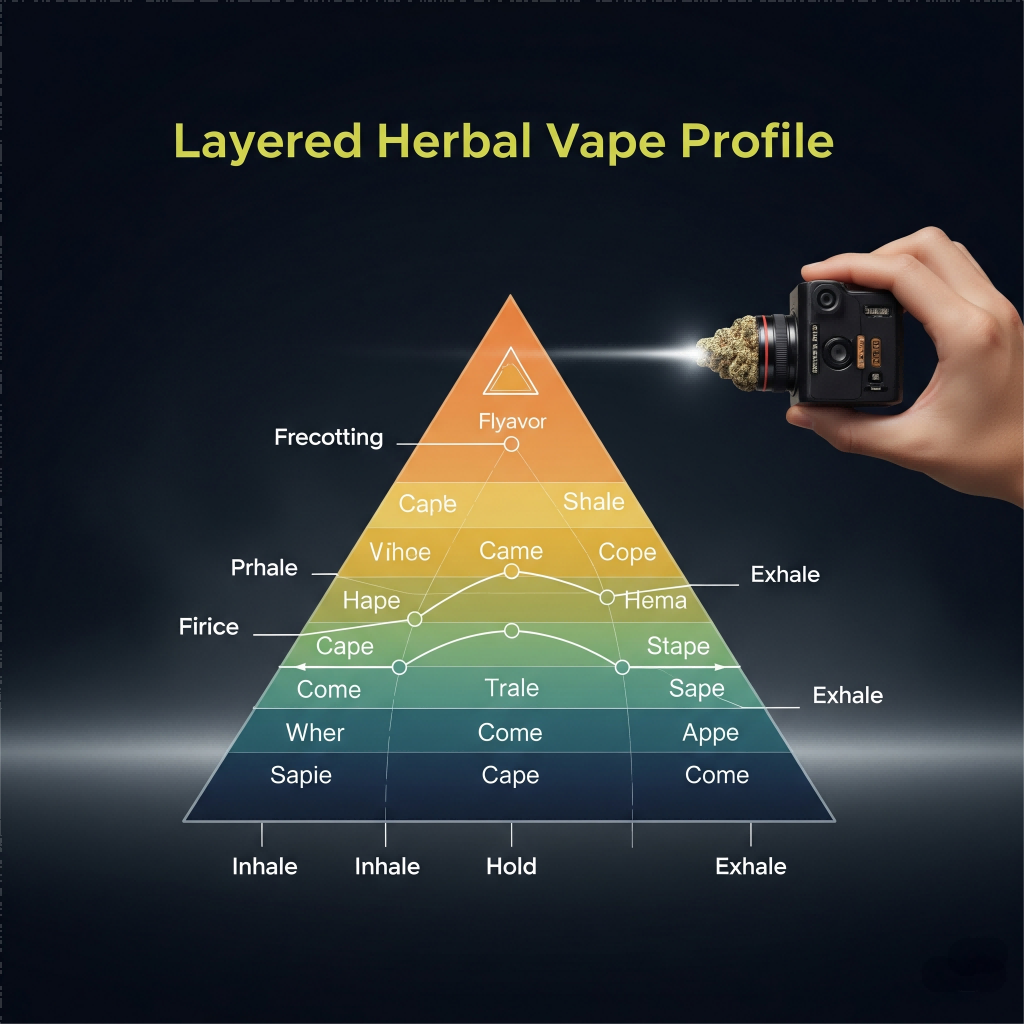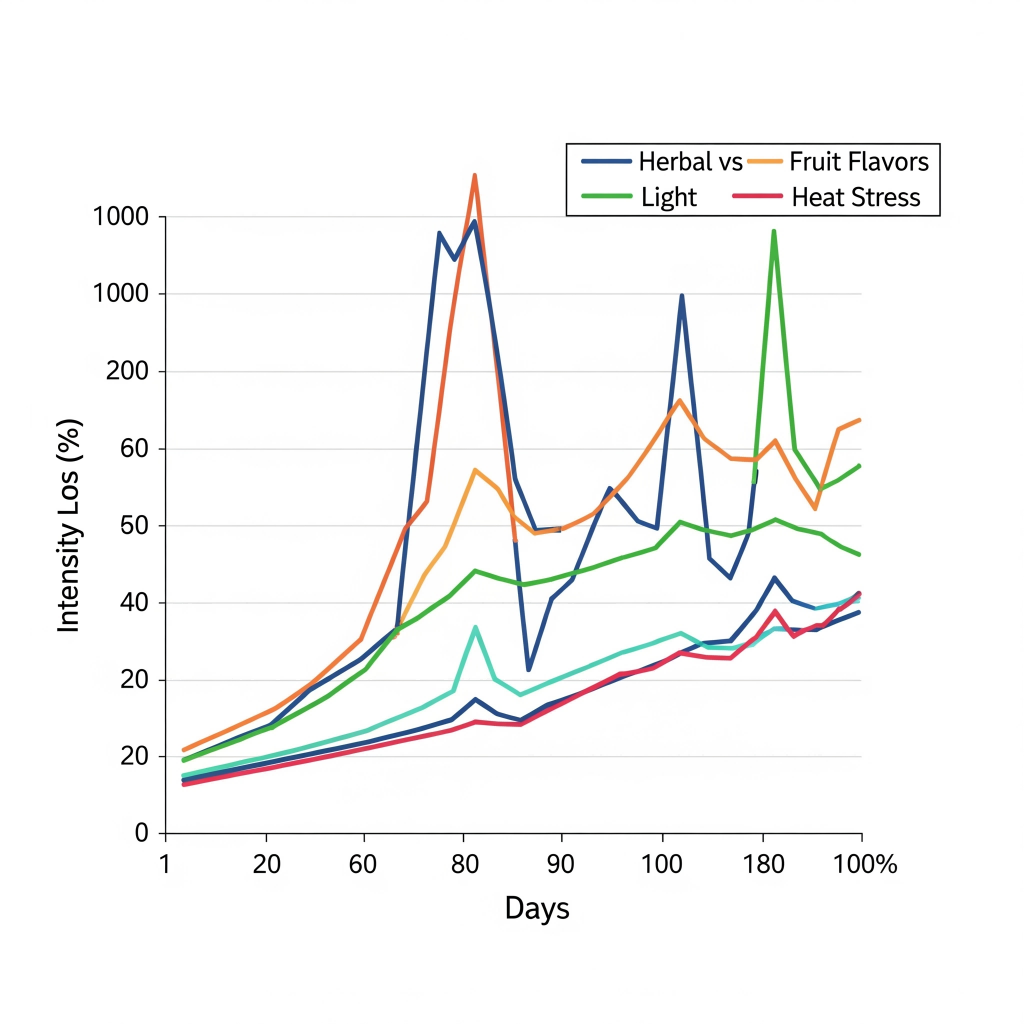Keywords: botanical vape flavor, herbal e-liquid trends, terpene-style flavoring
In a market long dominated by saccharine fruit and dessert profiles, consumer preference is rapidly evolving toward something more natural, functional, and sophisticated: herbal and botanical vape flavors. Driven by shifting health perceptions, the wellness movement, and an appetite for authenticity, the herbal vape trend is no longer a niche—it’s becoming a defining direction for vape product development in 2025 and beyond.

Evolution of Vape Flavor Trends (2015–2025)
This article explores how flavor developers can succeed in this space, focusing on terpene-inspired formulations, functional flavor pairings, and stability challenges. Designed for product formulators, brand strategists, and e-liquid manufacturers, we’ll break down actionable strategies for creating compelling, compliant, and consumer-friendly herbal flavor profiles. We’ll also highlight how CUIGUAI Flavoring’s extensive R&D in terpene-style e-liquid flavoring offers ready-made solutions to common formulation pitfalls.
As consumers become more discerning about what they inhale, the line between lifestyle and health-conscious vaping continues to blur. Herbal and botanical flavors are emerging as an answer to this demand for function-forward formulations. Ingredients like lavender, holy basil, chamomile, and ginseng are associated with calming, focus-enhancing, or energy-boosting benefits.
Brands are increasingly marketing herbal vapes as part of wellness routines—ideal for pre-meditation, work focus, or post-exercise wind-down. While regulations prohibit health claims, flavor names like “Tranquil Forest” or “Morning Clarity” imply functionality without crossing into therapeutic language.
The mainstreaming of cannabis has elevated public understanding of terpenes. These aromatic hydrocarbons occur naturally in herbs, fruits, and trees. In cannabis, they influence both flavor and psychoactive effect profiles. For instance:
This vocabulary has been adopted by vape users outside the cannabis market. Vape companies now highlight terpene content, whether cannabis-derived or synthetically matched. The result? Consumers now interpret flavor as a sensory and experiential design.
The average vape user in 2025 is no longer a teenager discovering novelty. Today’s vaper could be a 35-year-old professional seeking sensory refinement. Consumer research indicates decreasing preference for overtly sweet profiles and rising interest in more complex, drier, earthier flavors. These preferences mirror broader food and beverage trends—like the craft beer or third-wave coffee movements—that favor depth over sugar.
Botanical profiles thrive when they aren’t overwhelmed by fruity sweetness. That doesn’t mean eliminating fruit altogether—but it should act as a supporting note. Consider replacing synthetic mango with a touch of dried goji, or shifting from strawberry to hawthorn.
Recommended Botanical Palette:
To maintain balance:
While cannabis terpenes are restricted in some regions, food-safe equivalents provide similar olfactory impact without the legal complexity. Popular choices include:
These terpenes can be formulated synthetically or extracted from non-cannabis sources (e.g., orange rind, rosemary, pine needles). Flavorists should study vapor-phase behavior—some terpenes degrade or volatilize unpredictably at vape coil temperatures.

Terpene Map for Herbal Vapes
Sucralose and ethyl maltol, while widely used, can flatten nuanced herbal profiles. Instead:
Balancing herbal and floral with touch of acidity or salinity can trick the brain into perceiving “completeness” without cloying.
Botanicals pose serious solubility challenges in PG/VG systems:
Solutions include:
CUIGUAI Flavoring provides R&D-backed solutions pre-formulated for maximum solubility in e-liquid media—ideal for brands that want plug-and-play herbal formulations.
Avoid VG-heavy formulas when working with delicate botanicals. High VG can dull high-frequency aroma notes. A 60/40 PG/VG or 70/30 base is typically more suitable for botanical blends.
Recommended base design:
Layering is critical in ensuring a satisfying vape arc—users perceive top, middle, and base notes over the course of inhale to exhale.
Top Notes (Immediate impact): Menthol, eucalyptus, lemongrass, neroli
Mid Notes (Full mouth aroma): Green tea, sage, blackcurrant leaf, ginger
Base Notes (Lingering effect): Cedar, musk, patchouli, vanilla orchid

Layered Herbal Vape Profile
Botanical profiles often lack density or creaminess. Counteract this with:
Before finalizing a formula, perform full cycle testing:
Marketing herbal vape lines as functional—”Focus Blend,” “Evening Calm”—aligns with user intent. Avoid explicit claims like “anti-anxiety” or “immune boosting.” Instead, evoke mood, place, or ritual.
Use:
Stay away from juvenile design elements. Herbal vape buyers seek trust, credibility, and a sense of tradition or ritual.
In the EU and US, avoid using banned botanical extracts or suggestive names that imply drug treatment. Acceptable:
Avoid:
Most herbal aromatics are thermolabile. Take steps to:
High-resin or oily extracts can gunk coils or burn unevenly. Test across:
Herbal components are prone to oxidation. Strategies:

Line chart of shelf life of herbal e-liquid and fruit e-liquid
As the vape industry matures, so does its consumer base. They no longer want just candy clouds—they want ritual, wellness, elegance. Herbal and botanical vape lines offer a clear path forward, combining terpene-style flavoring, functional inspiration, and sensory depth. The challenge is ensuring these complex profiles remain stable, safe, and compliant.
Brands who succeed here will be those that collaborate with expert flavor houses and embrace the art and science of herbal blending. CUIGUAI Flavoring stands at the forefront, offering pre-tested, solubility-optimized herbal flavor systems that meet the demands of modern wellness vapers.
Author: R&D Team, CUIGUAI Flavoring
Published by: Guangdong Unique Flavor Co., Ltd.
Last Updated: Jun 24, 2025
For white-label options or technical consultation, contact CUIGUAI Flavoring’s innovation team at info@cuiguai.com or visit www.cuiguai.com.
The business scope includes licensed projects: food additive production. General projects: sales of food additives; manufacturing of daily chemical products; sales of daily chemical products; technical services, technology development, technical consultation, technology exchange, technology transfer, and technology promotion; biological feed research and development; industrial enzyme preparation research and development; cosmetics wholesale; domestic trading agency; sales of sanitary products and disposable medical supplies; retail of kitchenware, sanitary ware and daily sundries; sales of daily necessities; food sales (only sales of pre-packaged food).
Copyright ©Guangdong Unique Flavor Co., Ltd.All Rights Reserved. Privacy Policy